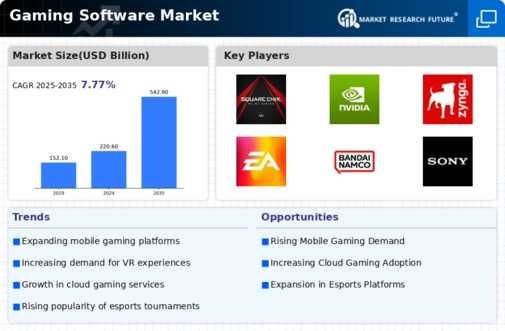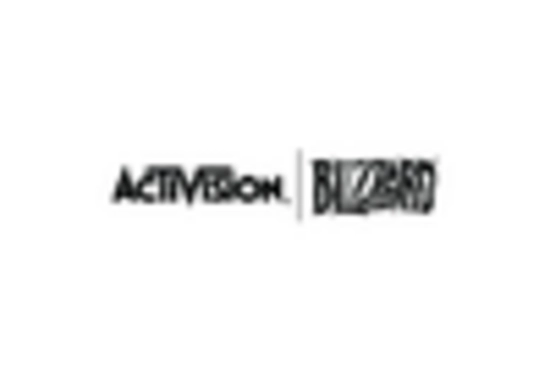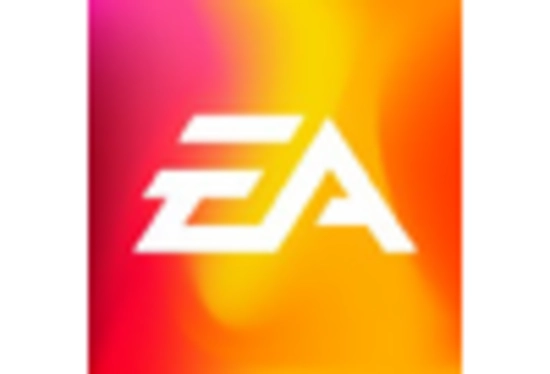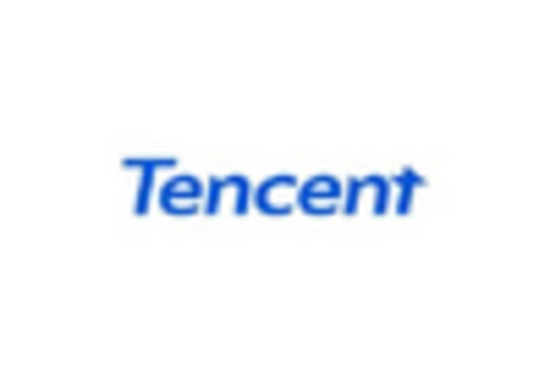The Gaming Software Market is currently characterized by a dynamic competitive landscape, driven by rapid technological advancements and evolving consumer preferences. Major players such as Microsoft (US), Sony (JP), and Tencent (CN) are at the forefront, each adopting distinct strategies to enhance their market positioning. Microsoft (US) has focused on expanding its cloud gaming services, leveraging its Azure platform to deliver seamless gaming experiences across devices. Meanwhile, Sony (JP) continues to innovate with its PlayStation ecosystem, emphasizing exclusive titles and immersive virtual reality experiences. Tencent (CN), on the other hand, has been aggressively investing in mobile gaming and strategic partnerships, thereby solidifying its dominance in the Asian market. Collectively, these strategies not only intensify competition but also foster a landscape where innovation and consumer engagement are paramount.
In terms of business tactics, companies are increasingly localizing their operations to cater to regional markets, optimizing supply chains to enhance efficiency. The competitive structure of the Gaming Software Market appears moderately fragmented, with a mix of established giants and emerging players. This fragmentation allows for diverse offerings, yet the influence of key players like Microsoft (US) and Tencent (CN) remains substantial, shaping market trends and consumer expectations.
In August 2025, Microsoft (US) announced a strategic partnership with a leading cloud service provider to enhance its gaming infrastructure. This move is likely to bolster its competitive edge by improving latency and accessibility for gamers worldwide, thereby reinforcing its commitment to cloud gaming. Such partnerships are indicative of a broader trend where technology companies are collaborating to create more robust gaming ecosystems, which could redefine user experiences.
In September 2025, Sony (JP) unveiled a new initiative aimed at integrating artificial intelligence into its game development processes. This initiative is expected to streamline production and enhance gameplay through personalized experiences. By harnessing AI, Sony (JP) not only aims to improve operational efficiency but also to set a new standard for interactive entertainment, potentially reshaping consumer expectations in the gaming sector.
In July 2025, Tencent (CN) expanded its portfolio by acquiring a stake in a prominent mobile game developer. This acquisition is significant as it allows Tencent (CN) to diversify its offerings and tap into new demographics, particularly in the mobile gaming segment, which continues to grow exponentially. Such strategic moves reflect Tencent's commitment to maintaining its leadership position in the gaming industry while adapting to changing consumer behaviors.
As of October 2025, the Gaming Software Market is witnessing trends that emphasize digitalization, sustainability, and the integration of artificial intelligence. Strategic alliances are increasingly shaping the competitive landscape, as companies recognize the value of collaboration in driving innovation. Looking ahead, competitive differentiation is likely to evolve, with a shift from traditional price-based competition towards a focus on technological innovation, enhanced user experiences, and supply chain reliability. This evolution suggests that companies must not only invest in cutting-edge technologies but also foster partnerships that enhance their market agility and responsiveness.


















Leave a Comment